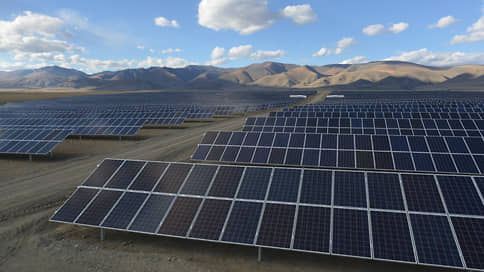At the end of 2023, silicon supplies to Russia increased 14 times
[ad_1]

At the end of 2023, the Russian Federation was able to largely restore the import of pure silicon, which sharply declined after the outbreak of hostilities in Ukraine. Deliveries increased 14 times, exceeding 330 tons. Basically, the place of the usual Western manufacturers has been taken by Asian ones. The main consumer of raw materials is solar energy. According to experts and market participants, consumers have not experienced any difficulties when changing suppliers, since high-purity silicon is produced according to uniform standards all over the world.
In 2023, 330.4 tons of highly pure silicon were imported into Russia, the total invoice value of which was 774.5 million rubles, a Kommersant source familiar with customs statistics reported. This is 14 times more in volume terms than in 2022. We are talking about a material used in the production of electronics and photovoltaic cells.
It is impossible to talk about a complete restoration of imports to the level of 2021: then, as Kommersant’s interlocutor notes, the import of high-purity silicon to Russia amounted to 709 tons for 612.7 million rubles. The vast majority of supplies in 2023 will be Asian-made silicon—Russian companies imported 324 tons of such goods versus 25 tons in 2021 and 7 tons in 2022.
Silicon, like most other goods from heading 2804, has been subject to EU export restrictions since April 2022, “in particular, there is a ban on the sale, supply, transfer, direct or indirect export into the territory of Russia or in favor of Russian individuals and legal entities persons,” notes Maria Udodova, lawyer of the compliance and sanctions law practice of BGP Litigation. The UK also introduced a ban on silicon supplies in July 2022. The US Department of Commerce did not introduce direct bans.
In 2021, the largest suppliers of high-purity silicon in the Russian Federation were German and American manufacturers – mainly for solar energy. In 2023, Kommersant’s interlocutor claims, “indirect supplies of American and German silicon to Russia will continue, but in very small volumes.”
One of the largest consumers of silicon in Russia is investors in the construction of solar power plants (SPPs); they are required to produce part of the equipment for SPPs in Russia in order to receive increased payments for energy to recoup their investments. In Russia, there are two large investors in solar power plants – Unigreen Power (controlled by Ream Management of Mikhail Sivoldaev, former deputy chairman of the board of Renova Viktor Vekselberg) and Solar Systems (beneficiary Mikhail Lisyansky). Currently, 1.8 GW of solar power plants operate on the Russian wholesale market. In 2022–2023, almost no new solar power plants were introduced – investors took advantage of the right to shift the launch dates of their facilities due to a surge in prices for imported raw materials.
The market for high-purity silicon has been established for a long time, and the characteristics of products on it are standardized, explains Igor Chausov, director of the analytical department of the ANO EnergyNet Center. Therefore, in his opinion, dependence on European raw materials should not be fundamental: “When designing large integrated circuits and other “devices-on-a-chip” they rely on the standard quality of the wafers. Switching to products from Asian manufacturers is unlikely to create a significant problem.” He admits, however, that different Asian suppliers “may have different rates of defective shipments.”
The fact that the transition of Russian semiconductor manufacturers from European and American to Asian silicon took place “almost without difficulties” is confirmed by two Kommersant interlocutors in the market. A top manager of a specialized company also says that “they managed to rebuild supplies quite quickly.”
[ad_2]
Source link





